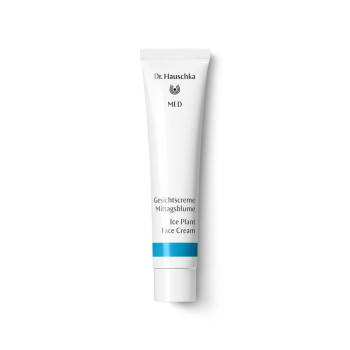
White Poppy
Synonyms: Opium poppy, mawseed
Scientific Name: Papaver somniferum L.
Family: Papaveraceae (Poppy Family)
Habitat
Central and southern Europe and Asia Minor.
Constituents
In the seeds: 40 to 55 percent oil with a high proportion of unsaturated fatty acids.
Description
Poppies are most familiar to us as fine red splashes of colour among the wild summer flowers. Once, together with the blue cornflowers, they typically bordered the fields of ripening grain – but today intensive methods of agriculture mean that this has become a rare sight. Their relative the white poppy – named for the colour of its seeds, not its petals – is surprisingly different in appearance. During its flowering season, in June and July, fields of white poppies form a sea of pink flowers.
Shortly before a white poppy flower bud opens it bends towards the earth, then straightens up again as the petals unfold. The way the petals emerge crumpled from the capsule to unfurl their delicate, silky smooth beauty and reach for the sky, playing gently in the breeze, is a little miracle. For about three weeks the white poppy, an annual that can grow to a height of around one metre, stands in full bloom. By August the oil-rich seeds in the capsules are ripe. In contrast to other poppy varieties, however, the crown of the white poppy capsule does not open automatically when it ripens. Hence the white poppy is sometimes referred to as a closed-capsule poppy. The white poppy seeds remain whitish because the seed coat lacks pigments.
Interesting Facts
The scientific name Papaver, which contains the word pap = inflate, aptly describes the form of the capsule. The epithet somniferum, from the Latin somnifer, means sleep-inducing. The Greek word for poppy is mekon (from which our German Mohn is derived) and is linked to the ancient Greek city of Mycone. The Greek mother goddess, Demeter, is supposed to have discovered the poppy in this city, which is also known by the name of Sikyon. The history of the white poppy is essentially the history of the opium poppy, of which the white poppy is a cultivated variety. Other varieties produce grey or bluish-black seeds. The poppy-seed cake popular in Germany and other parts of Europe is usually made with black poppy seed.
Human use of the opium poppy can be traced back to the New Stone Age (from around 4,800 BCE). For example, poppy capsules were found near the lake dwellings of Unteruhlding near Lake Constance in Germany. The first written evidence of poppy cultivation is found on Sumerian clay tablets from the time around 3,400 BCE. It is known that poppies were used as medicinal plants for pain relief as early as 3,000 BCE in the Mesopotamian city of Nineveh in today’s Iraq.
The Greeks and Romans, too, used the opium poppy mainly as a sleeping-inducing and narcotic agent. The Greeks were probably cultivating it from around 850 BCE as a food source, for its oil-rich seeds. Mixed with honey, these seeds provided a fortifying meal. Poppy oil was also used for a long time as lamp oil. Afyon in Turkey was the centre of poppy cultivation in Asia Minor. Even now, poppy and opium are both called afyon in Turkish. The opium poppy did not reach the Far East until the Middle Ages.
The myth that the poppy sprang from the tears of Aphrodite as she grieved for her dead young lover Adonis originated with the Greek poet Theocritus (c. 270 BCE). Theocritus also talks of the poppy as the flower of dreams and symbol of Morpheus, the god of dreams. Other gods connected with sleep and the symbol of the poppy include Nyx, goddess of the night, Hypnos, the god of sleep and Thanatos, his twin brother and god of death. The opium poppy has always been of interest for two reasons: one, for the high value of poppy seed as a foodstuff, and two, for the milky latex obtained when the capsules are slit. The opium obtained from this latex has been an important medical aid since ancient times. The alkaloids contained in opium, including morphine and codeine, provided people with a potent, analgesic, narcotic and antispasmodic therapeutic agent. Abuse of the substance as an intoxicant led to the prohibition of opium poppy cultivation in Germany. Only newer cultivars, which contain little or no amounts of alkaloid, are permitted for the production of seed for food.
Waldviertel in Austria, where today opium-reduced white poppies are cultivated for their oil, is one of the traditional regions of cultivation. Together with Bohemia, Moravia, Silesia and Mühlviertel in Austria it was one of the most important regions of poppy cultivation in Europe up until the end of the Austro-Hungarian monarchy. During World War II large farms were required to grow opium poppies for the manufacture of analgesics for the German army. The traditional poppy dishes that were a standard addition to the diet of every family were forbidden. With black humour the people of Waldviertel called the poppy-seed cake they baked secretly Galgenstrudel, or gallows cake. After 1950 poppy cultivation in Waldviertel diminished greatly. Only in the 1980s and 1990s was it rediscovered as an arable crop and the reduced-opium varieties grown once more.
The cultivation of poppies for food in Waldviertel was traditionally women’s work. Until 1950, farmers’ wives planted poppies for their own use in a Bifang – a small, usually triangular field. They cut off the ripe, closed seed capsules with a sickle or small knife and took them home, where they opened them and removed the seeds. They then used special windmills to blow away impurities as they sieved and cleansed the seed of dust before grinding it in wooden vessels and mortars. During the Biedermeier period poppy mills were invented for this last step, but were initially only used in towns and cities.
The plant from another perspective
The way in which the flower bud bends towards the earth only to become upright once more as the crumpled petals unfold is like a dual gesture of opening and liberation. Thus the white poppy is emblematic of the way open to eczema sufferers. They, too, sometimes hang their heads and feel despondent in their itchy, flaking and dry skin that is rough to the touch. They wish for smooth, soft skin – just like the petals of the white poppy.
The plant in our products
The readily absorbed oil of the white poppy is included in:


